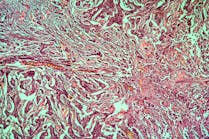Pathogen-reduced of platelets associated with longer shelf life and reduced risk of transfusion-transmitted diseases
The implementation of a 100% pathogen-reduced platelet supply is feasible and may help to increase the shelf life of platelets and decrease the risk of transfusion-transmitted diseases, according to new results from France presented at the Plenary Oral Abstract Session at the AABB 2022 Virtual Meeting.
The results, presented by John Pitman, PhD, from Cerus Corporation, were based on an analysis of the French experience with pathogen-reduced platelets. Pathogen reduction of platelets was first introduced in France in 2006 and a 100% pathogen-reduced platelet supply was implemented in 2017. Between 2018 and 2019, France implemented a 7-day shelf-life for platelets for both its military and civilian blood supplies. Pitman and his colleagues compared the impact of these changes on transfusion reaction rates, including transfusion-transmitted infections and blood component use before and after the conversion to pathogen-reduced platelets and 7-day storage as the national standard.
The researchers collected data on transfusion reactions and blood component use from annual hemovigilance reports published by France’s national health agency. Data were stratified into two 3-year periods: 2015-17 and 2018-20.
The results showed that a total of 801,047 conventional platelet units were transfused in France between 2015 and 2017, all of which were issued without bacterial screening and given a 5-day shelf-life. During this time, there were 15 transfusion-transmitted infections, one of which resulted in a fatality and five of which were considered life-threatening.
For the 2018-20 period, there were a total of 977,989 platelet units transfused. All of these units were pathogen-reduced and all were given a 7-day shelf-life. Pitman noted that the difference in transfusion-transmitted infection rates between the two time periods was significant. “The mean overall transfusion reaction rates per 100,000 platelets issued fell from 425 to 367,” he said, adding that this was due to decreases in allergic reactions, febrile non-hemolytic transfusion reactions, alloimmunization and immunologic incompatibility. Notably, there were no cases of viral infections against which the pathogen reduction system is associated with any platelet units that underwent pathogen reduction.





